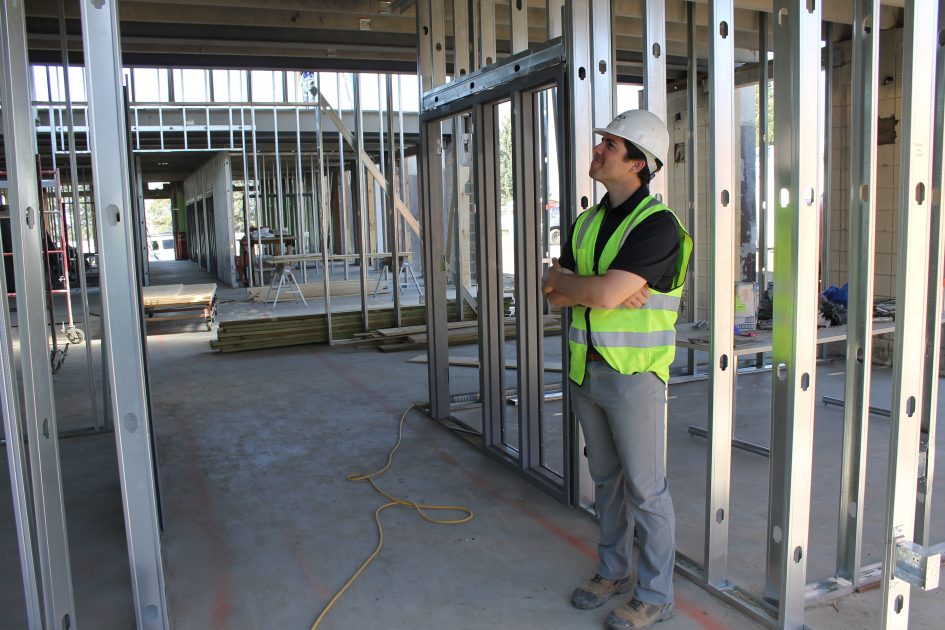“Should we leave an existing 215-foot leaning retaining wall system along a path that travels under a dual overpass that may fail, or should we rehabilitate it to mitigate potential failure at a reduced cost?” That was the question a parks and recreation district asked the AE2S Structural Practice to answer after completing a structural condition assessment.
“Our assessment determined the existing conditions exhibited stability concerns that had a high risk of continuing movement and potential collapse. We recommended rehabilitation of the wall to prevent the wall from failing in the future. It was determined the costs to correct after wall failure would be two times that of rehabilitation. Plus, failure would lead to loss of use,” explains Jordan Geiger, AE2S Structural Practice Leader. What started as a structural condition assessment led to a rehabilitation project that minimized risk and ensured long-term serviceability for the district.
During a another structural condition assessment in 2012, AE2S inspected concrete deterioration at a city’s wastewater treatment plant. Concrete structures like those found at the facility are designed to last more than 75 years. However, the less than 30-year-old plant had significant concrete deterioration from hydrogen sulfide exposure. AE2S provided recommendations and project support to repair the damaged concrete. Coating systems were installed to maintain conditions ensuring future serviceability. More than 10 years later, the concrete in the basin is performing exceptionally well despite the harsh conditions.
These two case studies show how a structural condition assessment can address issues early to save money in the future. As new construction costs continue to rise, facility managers are tasked with the challenge of maintaining existing infrastructure to maximize lifespans. Ensuring structural longevity reduces long-term operating costs by maximizing existing lifespans, reducing risk of failure, and improving forecasts for planned and routine maintenance costs.
A structural condition assessment is a comprehensive process involving inspection, analysis, testing, and review of existing structures to provide an expert opinion of current conditions. It also targets and exposes potential critical issues such as sustained damage, structural deficiencies, facility maintenance needs, and recommended upgrades. At the conclusion, the structural condition assessment will summarize the state of existing conditions, identify critical issues, and provide recommendations to prolong serviceable lifespan.
“Aging infrastructure has the most to gain through a structural condition assessment. As a structure ages, wear and tear from external or internal forces can lead to deterioration that reduces capacity, function, or integrity,” explains Geiger. “Facilities can benefit from an assessment of current conditions to aid in facility planning. Diligent owners who identify issues early will reap benefits in reduced long-term capital costs.”
Geiger says facility managers can start the process by looking for issues such as concrete cracking, material corrosion, discoloration or staining, leaking water containment basins, hydrogen sulfide exposure, and settlement issues. If you have questions about the longevity or safety of a facility, reach out to Jordan Geiger to find out if a structural condition assessment is appropriate for your situation.

